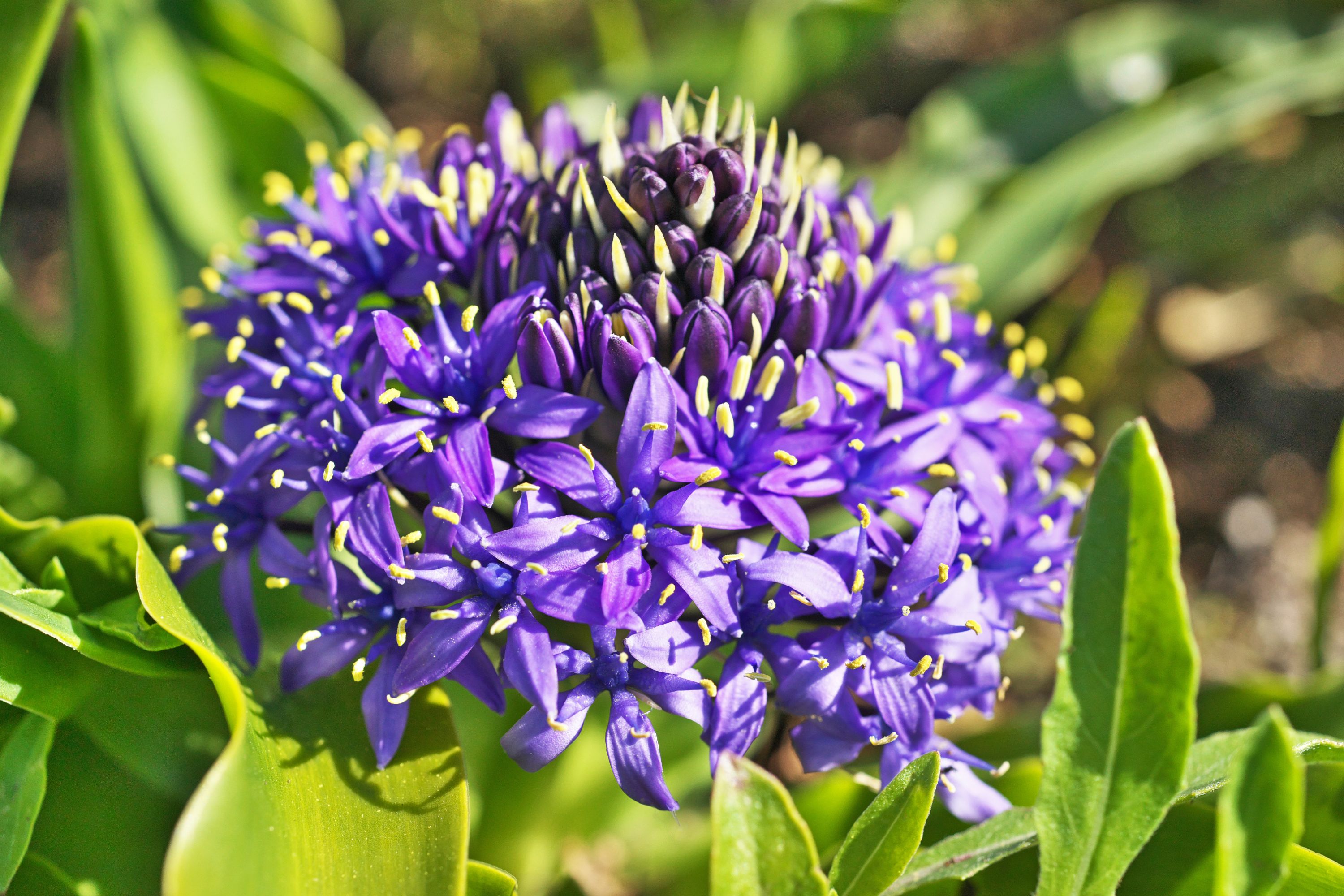Portuguese squill
(Scilla peruviana)

Description
Scilla peruviana, the Portuguese squill, is a species of Scilla native to the western Mediterranean region in Iberia, Italy, and northwest Africa. It is a bulb-bearing herbaceous perennial plant. The bulb is 6–8 cm in diameter, white with a covering of brown scales. The leaves are linear, 20–60 cm long and 1–4 cm broad, with 5-15 leaves produced each spring. The flowering stem is 15–40 cm tall, bearing a dense pyramidal raceme of 40-100 flowers; each flower is blue, 1–2 cm in diameter, with six tepals. The foliage dies down in summer, re-appearing in the autumn. Although the epithet peruviana means "from Peru", it is strictly a western Mediterranean species. Linnaeus named the species in 1753, citing an earlier name given to the plant by Carolus Clusius, Hyacinthus stellatus peruanus. Clusius mentioned the species as growing in the Antwerp garden of a certain Everardus Munichoven, who reportedly got the plants from Peru. The error was already mentioned in 1804 in Curtis's Botanical Magazine. There is no reliable source for the story about a ship named 'Peru', shipping plants from Spain to Northern Europe, misleading Clusius or Linnaeus into giving the erroneous name. It is commonly grown as an ornamental plant for its spring flowers; several cultivars are available ranging in colour from white to light or dark blue, or violet. In some areas it is also known as hyacinth-of-Peru, Cuban-lily, or Peruvian scilla. It is not entirely hardy, suffering from prolonged frost. The best environment is a warm mediterranean climate similar to its native habitat. Scilla is a genus of about 50 to 80 species of bulb-forming perennial herbaceous plants in the family Asparagaceae, subfamily Scilloideae. Sometimes called the squills in English, they are native to woodlands, subalpine meadows, and seashores throughout Europe, Africa and the Middle East. A few species are also naturalized in Australia, New Zealand and North America. Their flowers are usually blue, but white, pink, and purple types are known; most flower in early spring, but a few are autumn-flowering. Several Scilla species are valued as ornamental garden plants. Scilla has most recently been classified as belonging to the family Asparagaceae, subfamily Scilloideae; that subfamily was formerly treated as a separate family, Hyacinthaceae. Prior to that it was placed in the tribe Hyacintheae of the family Liliaceae.
Taxonomic tree:







